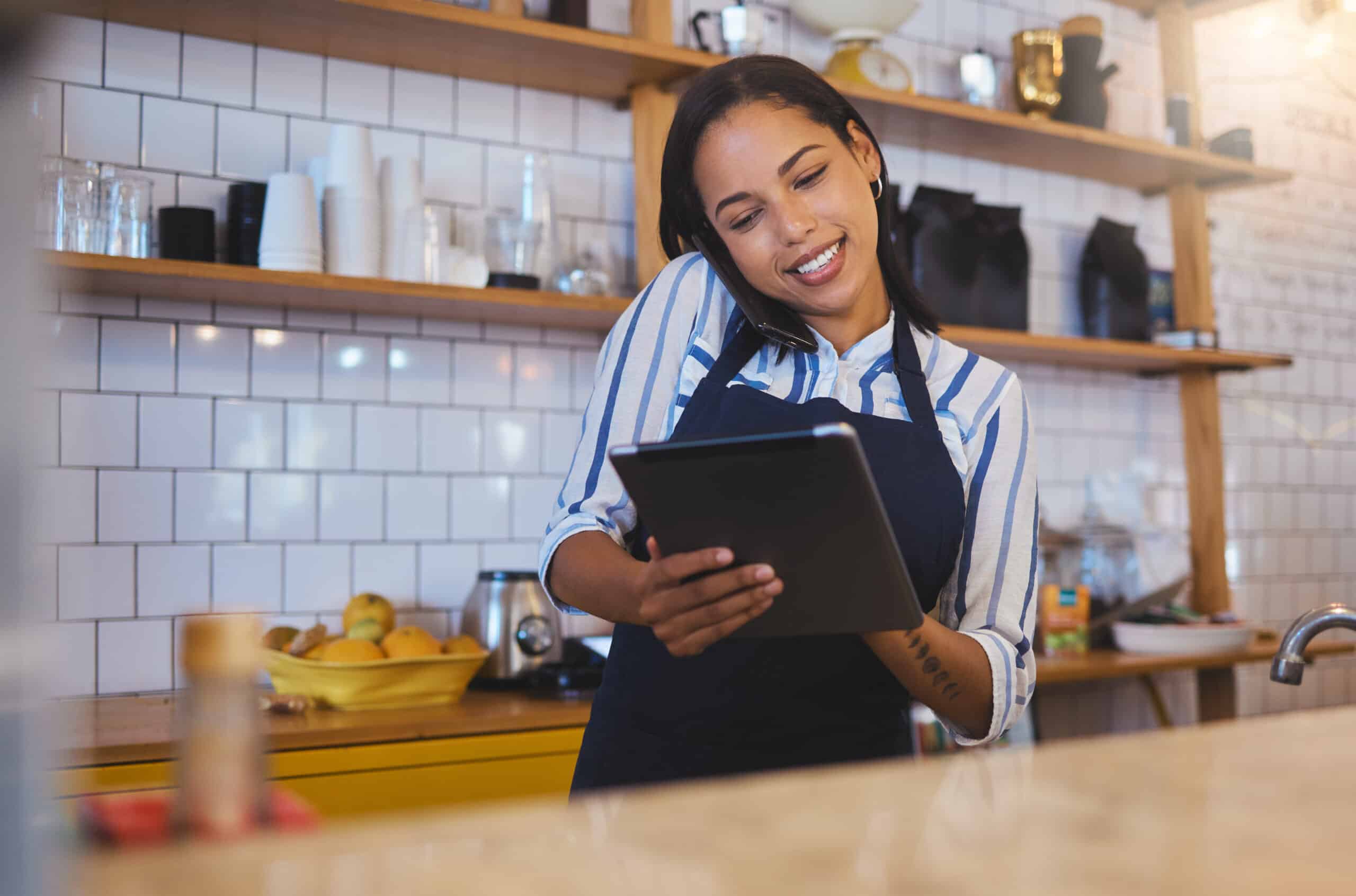Opening and closing procedures are the backbone of any great restaurant operation. Routines that reinforce brand standards ensure that your restaurant is ready for service as soon as the first customer of the day walks through the doors. Clearly defined procedures that start and end each day’s business create a cycle of excellence in which each day sets the next up for success.
Carefully crafted and meticulously followed opening and closing routines offer numerous benefits to your restaurant. Critical outcomes include:
- Improved Brand Reputation: Customers expect the same level of quality and service each time they visit. Opening and closing routines that lead to reliable cleanliness, food, and service provide consistency and reinforce a positive image of your brand.
- Increased Customer Loyalty: A well-maintained restaurant that consistently delivers excellence fosters customer trust and brand loyalty. Satisfied customers are more likely to return, to order more with each visit, and to recommend your restaurant to others.
- Maximized Revenue: Efficient opening and closing procedures reduce downtime, ensure that the restaurant is ready to serve customers promptly, and decrease the likelihood of costly errors or accidents. Combined with brand loyalty, this operational efficiency directly impacts your bottom line.
We’ve got a list of essential opening and closing procedures for both front of house and back of house operations to help your brand thrive. Put these routines in place to drive brand loyalty and boost profits with consistency.
Opening Procedures to Start the Day Right
A well-structured opening routine sets the tone for a successful day. Here are a dozen key procedures to ensure the restaurant is ready to welcome customers from the moment you turn on the lights.
Front of House
- Set up the dining area. Provide a comfortable and welcoming environment for customers. Staff should arrange tables and chairs per floor plan, check table settings, and inspect overall cleanliness.
- Inventory and restock supplies. Stock all areas with napkins, utensils, and condiments. Refill empty containers or dispensers. Taking a few minutes on this step now will keep customers happy later, preventing delays and streamlining operations.
- Check reservations and special events. Floor managers should review the reservation list, make themselves aware of celebrations and special events, and communicate with kitchen staff about what they learn.
- Prepare the POS system to ensure its functionality and avoid transaction delays. Turn on and test the POS system, ensure terminals are functioning correctly, and make any necessary updates to menu items and prices.
- Greet and brief staff. Restaurant staff turnover continues to be an issue for owners and managers. Make sure that everyone who’s expected has arrived, then conduct a pre-shift meeting. Assign roles and sections, share information about the current specials, and make sure everyone is on the same page.
- Inspect restrooms. Clean restrooms that reflect overall restaurant hygiene are frequently mentioned in online reviews. Address any immediate cleaning needs before opening, then check supply levels and establish a schedule to keep restrooms sparkling throughout your hours of operation.
Back of House
- Inspect kitchen equipment. Prevent disruptions that can impact food safety, delay service, or temporarily close your restaurant. Turn on equipment, check calibration, and record your findings to spot any issues.
- Keep food safe. Check food storage areas and make sure that temperature monitoring systems are functioning properly.
- Verify food deliveries: Check delivered items against the order list, inspect the quality and freshness of perishable items, properly store items in designated areas, and report any discrepancies or issues to the supplier immediately.
- Inventory on-hand stock. Rotate perishables according to food labels, and note items that you’ll need to reorder.
- Brief staff on task assignments. Assign specific tasks and let everyone know what they’ll be doing. Leave a few minutes to address questions or concerns.
- Clean and sanitize work areas. Prevent contamination by cleaning work surfaces. Place a sanitation bucket at each station. Clean and sanitize as needed during each shift, replacing the buckets every one to two hours.
Closing Procedures to Get Your Restaurant Ready for Tomorrow
Finishing today with a carefully structured closing routine ensures a smooth start to another successful day. Here are 12 essential front and back of house procedures to guarantee your restaurant is thoroughly cleaned, secured, and prepped for the next day’s operation.
Front of House
- Organize menus and promotional materials. Replace worn or stained menus. Update promotional materials to reflect the latest seasonal specials and offers and improve customer experience.
- Update the staff schedule. Review staff schedules and confirm as needed. Communicate any unexpected changes and post the revised schedule in a visible location to prevent confusion and understaffing that can negatively impact diners.
- Organize serving stations. Tidy up so that servers can quickly access the supplies they need and offer diners more efficient service. Restock napkins, utensils, and condiments and ensure everything is in its proper place.
- Clean and sanitize all public areas. Prepare for the next day by wiping down tables and chairs, sweeping and mopping floors, and cleaning the restrooms.
- Inspect and clean outdoor areas. If you offer outdoor dining, make sure patios, tables, and other seating areas are clean and prepped for the next day. Check the parking lot and sidewalks for trash and debris.
- Secure the premises. Check windows and doors, turn off lights, lock up, and activate your security system to prevent unauthorized access and loss due to theft.
Back of House
- Store leftover food carefully. Use proper food labeling techniques to ensure that everything is used within a safe time frame, and nothing goes to waste.
- Dispose of waste. Sort trash, recycling, and compost as appropriate. Discard any hazmat and cooking oils per local regulations.
- Review remaining inventory levels. After service ends, check your stock on key items to ensure that you’re not caught short. Check the quantities of every ingredient to ensure you’ve got enough to prep for the opening rush. Maintaining a steady inventory offers benefits beyond happy customers. It will also allow you to take advantage of the best prices by proactively purchasing staples and seasonal items.
- Restock and organize refrigerators, freezers, and dry storage. Clean all areas and rotate stock. Check the temperature log for compliance and consistency. Establish a FIFO (first-in-first-out) system to use older items first.
- Shut down equipment. Save on energy bills and reduce the risk of fire by shutting down equipment every night. Turn off ovens and fryers. Secure gas lines as needed.
- Clean and sanitize the kitchen. Wash and disinfect every surface to prevent contamination and maintain a pleasant work environment for staff. Remember to check often-overlooked areas like grease traps, ice bins, and sink drains.
The #1 Opening and Closing Procedure for Front or Back of House
Every dining establishment has its own way of doing things. We’ve given you two dozen opening and closing procedures that are sure to guide you toward success. There’s one more that is guaranteed to have an impact at any restaurant:
Implement a digital checklist system. Boost employee accountability and ensure that every checklist is fully completed, on schedule, and on time. Create custom checklists for all of your FOH and BOH opening and closing procedures. Include lists for cleaning, restocking, and anything else that will reinforce a consistent customer experience. Add lists for administrative tasks like closing out tills, replacing seasonal signage, or mandatory training updates. To maximize the value of your system, choose software like DailyChex that works on any device, comes with built-in photo and video capabilities, and offers robust reporting capabilities to help you spot and correct trends before they become issues.
See how DailyChex and AuditApp by MeazureUp can help you implement efficient and effective opening and closing procedures at your restaurant. Schedule a demo today.



